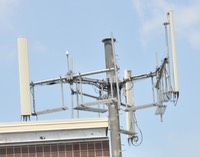Thanks to the availability of cheap cloud computing, it is now practical to use massive computational power to design better communication systems and solve problems related to communication theory. In the WCRL, we have a 396-core cluster computer to support our research in the areas of interference analysis, cooperative communications, and efficient coded-modulation. The computing environment is described in my plenary at the 2012 Australian Communication Theory Workshop (held in Wellington, New Zealand). These resources were funded by the NSF CRI program, and are available for other research groups that are also working on these topics. We have developed a web-interface so that you can run CML simulations remotely on our cluster. Several WVU courses, including Wireless Networking, Coding Theory, and Communication Theory, use the computing cluster to run student projects. In addition to running simulations, the cluster is used to run optimization algorithms including genetic algorithms, which are especially promising for solving hard design problems. We have used genetic algorithms to design efficient space-time codes [J19] and efficient bit-interleaved coded modulation schemes [C56].
Matthew C. Valenti
Professor, Lane Department of Computer Science and Electrical Engineering
Copyright 2010-2022 Matthew C. Valenti
